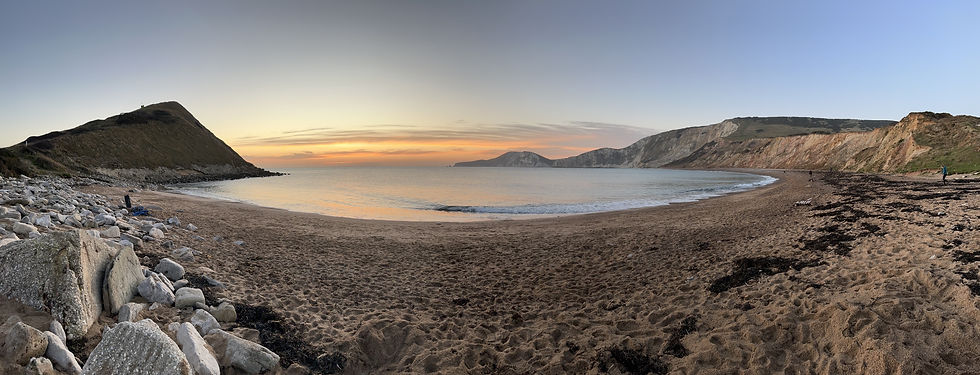Simple Photography Tips for You - Photographing seashells
- Michael Blyth

- Apr 18
- 4 min read
Updated: May 30
Six simple photography tips for you on how to make the most of a walk on the beach
Look at the beach in front of you, for interesting potential images
Make use of the macro-facility if you have it, but also make use of slightly further back approach
Turn background distraction to strength and balance
Remember the intersecting thirds (Rule of thirds)
Try holding your phone-camera upside down to get closer to the ground
Be aware of breaking waves to help with picture interest and balance

So you're walking along the beach, perhaps on holiday, the others are off doing their own thing. You however have your camera or phone-camera. Here are some ideas.
You remember I keep banging on about of looking and waiting to see, the more you do, the more you see.
I was doing this very thing, not on holiday, but on the beach at Studland, a while back. It's a huge vista, stretching from Bournemouth in the distance, right across to The Needles and the Isle of Wight, and then around to Old Harry Rocks.
Depending on the weather there are opportunities galore, indeed many years ago, when doing a portrait photo-shoot on the beach nearby, I supplied a canvas almost two metres long to my client; of the beach, waves breaking, and Old Harry in the background.
One of the quite common features about this beach is the number of seashells that get washed up, along with seaweed and seagrass, and plastic.
Image One shows a bivalve which has been left stranded in quite a quirky position. It's one of many hundred on Knoll Beach, (beach and parking run by the National Trust) but for some reason this one took my fancy.
Perhaps it was the way it sat, and the relationship with the strands of seaweed - a beach version of Masterchef, with odd and quirky decoration on the 'plate'? Anyway, the image taken from above has a simplicity that I love. Using the grid on my iphone I ensured that the shell was the main subject, sitting on one intersecting third.
If this was you approaching taking this image, imagine moving around the subject, seeing how it sat best in relation to the other bits in the picture - the straight weed comes from an unusual angle, perhaps it would be better rotating ninety degrees or even one-eighty.
EXPERIMENT!! See what floats your visual boat.

Image Two and Three are virtually the same - but equally very different. Do you see what is different? It's a really interesting Simple Photography Tip. It took me a while to see, so I share it here.

With the first image, I realised that the sea in the background, despite being out of true focus, was sufficiently in-focus to have an effect. The combination of the seashell sitting on the lower third, slightly to the right of centre, and the sea taking up the whole of the upper third, has provided a remarkable amount of balance.

The same is pretty much true of Image Two. In fact the only, but critical, difference is that there is a breaking wave, adding a whole bunch of movement and character, and a very different balance.
Given a 'real' camera, a different depth of field would be obtainable, which would have yet another effect on the image and it's balance.

All these images, with the exception of the first, were taken using the useful little phone-camera technique of holding it upside down so that the lens is nearer the ground without having to lie on the wet sand. I was still post hip-op recovery so was never going to get down there anyway!
Image four -I really like the angle and the texture, also the way the strand of green weed parallels the mark in the sand. Another Simple Photography Tip is to make sure that the shell is not clipped either side. It's not quite clipped in this image, but a couple of millimetres more would be better.

Image Five, is an interesting one, artistically or architecturally the angle I took it at is known as an Axonometric Projection, and as here, can produce a very powerful picture. Years ago when my wife and I also ran an art-gallery, we had an artist who specialised in this form, and her images were very wonderful.
The colour of the ribbing on the shell at this angle makes it look as if artificially lit. This was not a deliberate decision, but is part of what attracted me to the shell - it's all something that will come naturally the more you practise.
The background here is also worth a look. The upper third of the picture has planty of 'interest', but out of focus, and does not have as much dominance as in the earlier pictures.
One danger of the phone upside down photography trick is that it's very easy to include extraneous 'stuff'. In this case, the toe of my wellington boot, I did notice it actually but since these images are to help you, thought it a good illustation!
And if it's a sunny day, it's a great way to get a fabulous sun tan.



Comments